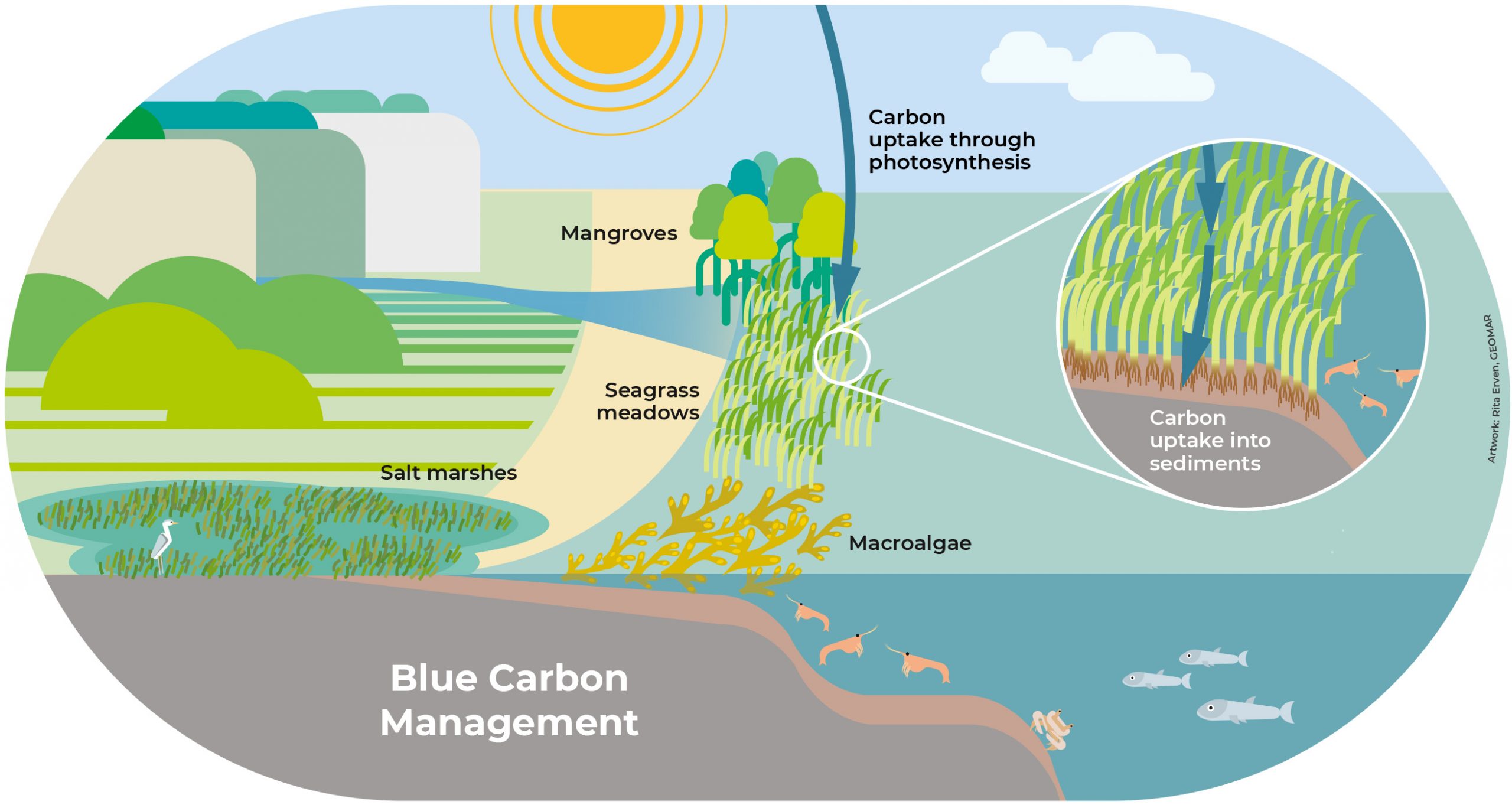
“Blue carbon” ecosystems such as mangroves, seagrass meadows, salt marshes and kelp (macroalgae) forests are extremely effective at taking up CO2 through photosynthesis and storing carbon in their soil and biomass. Thus, managing and restoring blue carbon ecosystems can increase the amount of carbon stored in coastal sediments.
Co-benefits such as the reduction of coastal erosion and flooding, improved water quality, increased habitat for marine life, reverse acidification and hypoxia and the support of livelihoods and tourism, make it worth pursuing these approaches.
